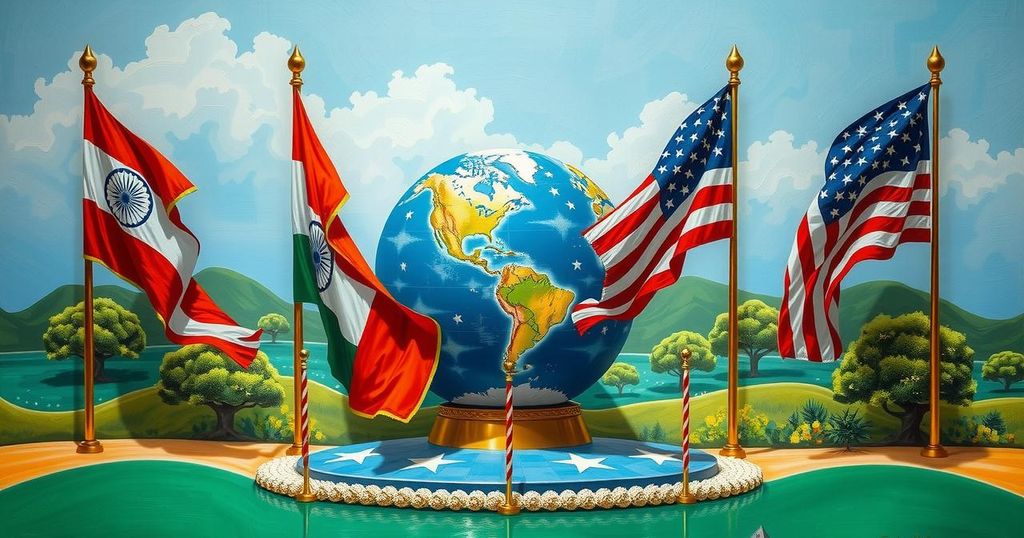India aims to enhance ties with the U.S. under a potential Trump 2.0, as trade tariff tensions may resurface. Historical trade challenges include retaliatory tariffs and India’s exclusion from the Generalized System of Preferences under Trump. With significant trade volumes, India faces pressures to adapt amidst U.S. tariffs, presenting both challenges and opportunities in critical sectors. Despite tariff disputes, India-U.S. strategic relations were reinforced during Trump’s first term, particularly regarding shared concerns over China.
As India seeks to strengthen its ties with the United States in the potential Trump 2.0 administration, previous tensions regarding trade policies may resurface. President Trump’s reiterated threats of imposing reciprocal tariffs emphasize the ongoing friction between the two nations. He has characterized India as a “tariff king” due to its high import duties, particularly affecting American products such as Harley-Davidson motorcycles. Despite India’s efforts to lower tariffs, Trump remains unsatisfied, highlighting the complexity of the trade relationship.
The historical context shows that trade relations between India and the United States have faced challenges. In 2019, India retaliated against U.S. tariffs on steel and aluminum by increasing its own tariffs, leading to the withdrawal of India’s preferential trade treatment under the Generalized System of Preferences (GSP). In the fiscal year 2023-24, India’s exports to the U.S. reached $77.52 billion, establishing it as India’s largest export destination, while imports totaled $42.2 billion, indicating significant interdependence.
Under a potentially U.S.-centric Trump administration, India might be urged to reduce its trade barriers. This scenario presents challenges, such as increased tariffs from the U.S. that could undermine the competitiveness of India’s critical industries, including IT and textiles. Conversely, if Trump imposes higher tariffs on Chinese imports, Indian exporters may benefit as companies seek alternatives. This phenomenon was evident during the previous trade tensions between the U.S. and China, where India capitalized on additional demand.
Despite tariff disputes, strategic ties between India and the U.S. progressed during Trump’s first term, with cooperative events like “Howdy Modi” and “Namaste Trump” illustrating robust diplomatic relations. Both leaders share concerns regarding the rise of China, promoting alignment of their agendas in the Indo-Pacific region to potentially mitigate trade-related challenges under a second Trump term.
In conclusion, as India navigates its relationship with a possible Trump 2.0 administration, the complexity of trade dynamics remains prominent. While India faces pressures to modify its trade policies, it also stands to gain from shifts in the global market, particularly in light of U.S. tariffs on Chinese goods. Despite earlier tariff disputes, India and the U.S. have strengthened their strategic partnership, aligning against common challenges, notably from China. This multifaceted situation highlights both opportunities and challenges for India in the evolving landscape of international trade.
Original Source: m.economictimes.com






